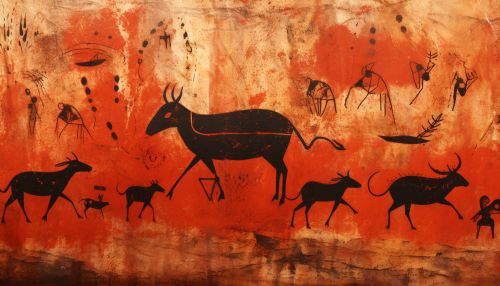Cave Paintings
Introduction
Cave paintings, also known as parietal art, are a type of prehistoric art that includes any paintings, drawings or carvings on the walls, ceilings, or other large surfaces of caves and rock shelters. These artworks are among the earliest known visual art pieces, dating back to the Upper Paleolithic period, approximately 40,000 years ago.


Discovery and Distribution
Cave paintings have been discovered across the globe, with notable concentrations in regions such as Western and Central Europe, Indonesia, Africa, Australia, and the Americas. The earliest known cave paintings were found in the El Castillo cave in Spain, where a hand stencil has been dated to more than 40,000 years old.
Techniques and Materials
The creation of cave paintings involved a variety of techniques and materials. The artists used natural substances like charcoal, ochre, hematite, manganese oxide and kaolin to create their pigments. The pigments were often mixed with a binder, such as animal fat, plant juice, blood, or egg, to help the color adhere to the rock surface.
Themes and Interpretations
The themes depicted in cave paintings are diverse, ranging from human figures and abstract signs to a wide array of animals. The most common subjects are large animals that were hunted by the artists' societies, such as bison, horses, aurochs, and deer.
Preservation and Conservation
The preservation of cave paintings is a complex and challenging task. Many factors, including human interference, environmental conditions, and biological growth, can contribute to the deterioration of these artworks.
